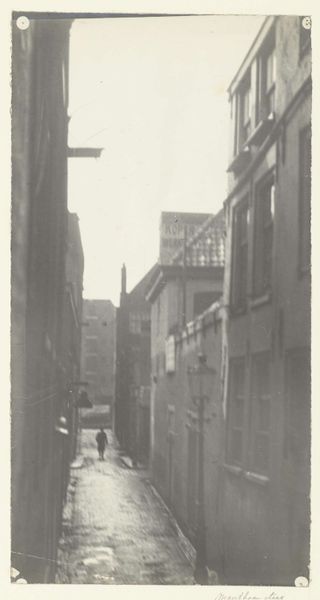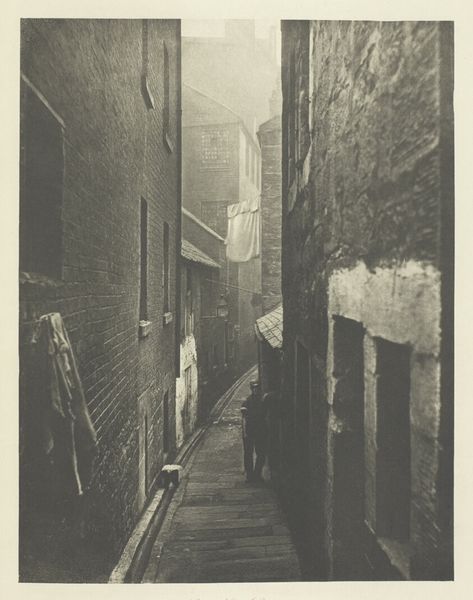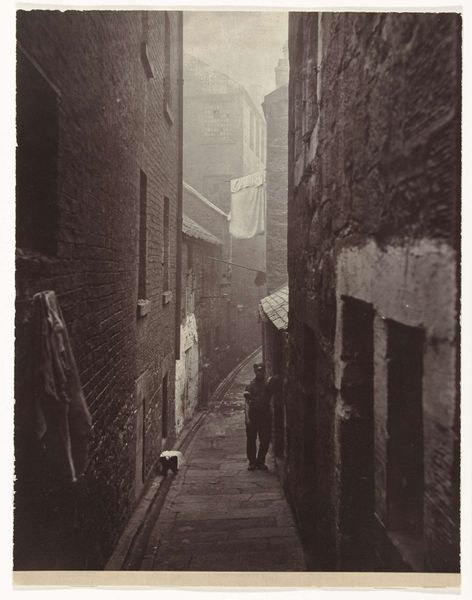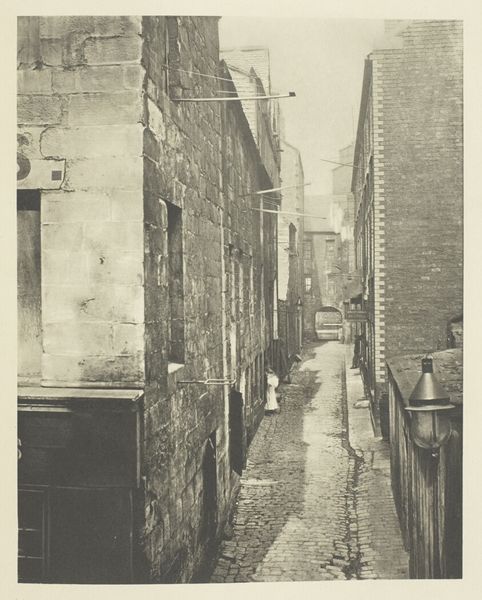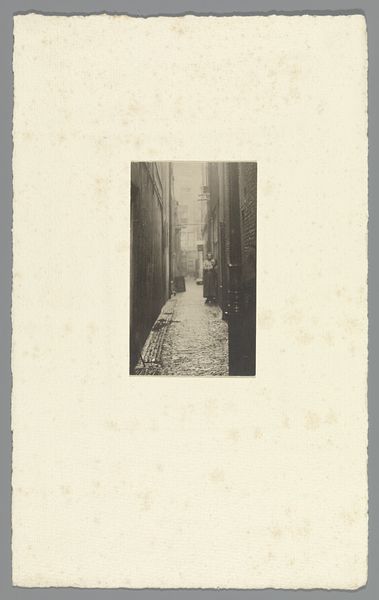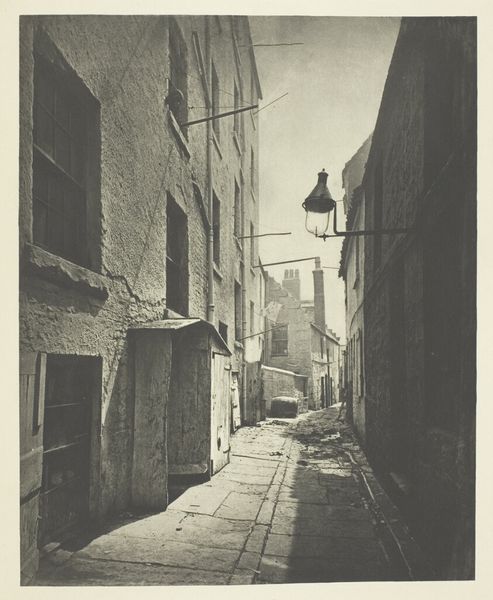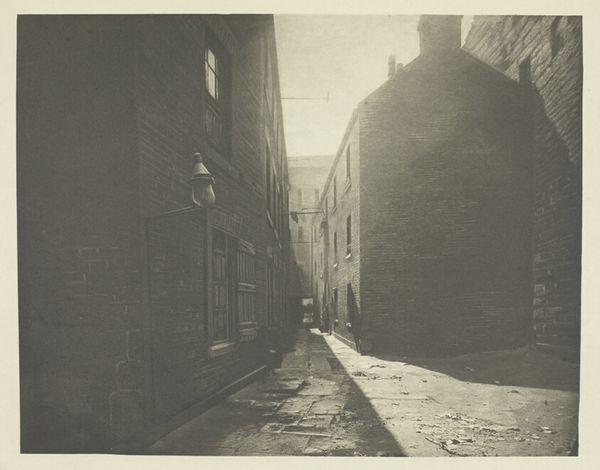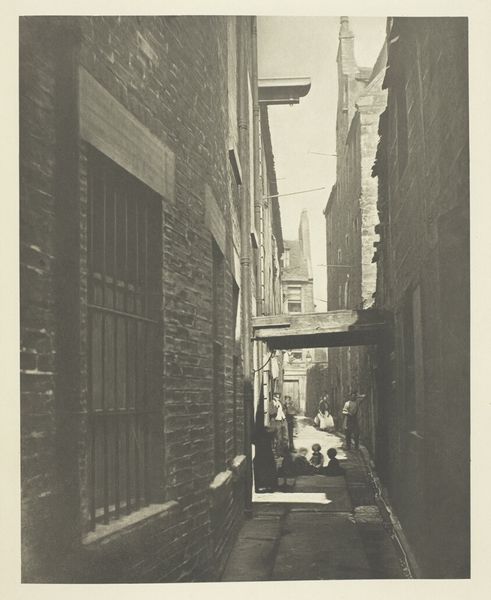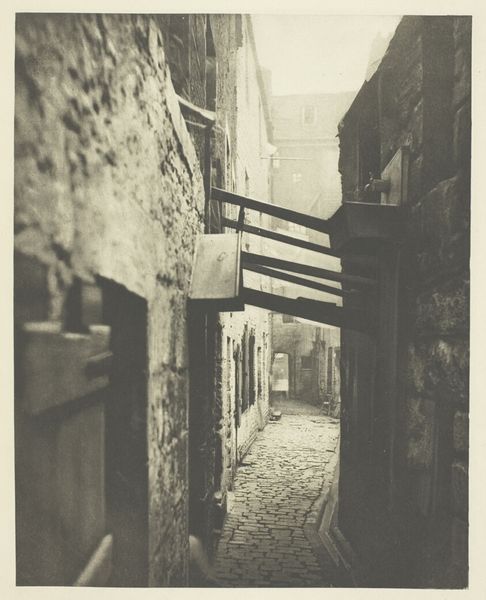
Dimensions: height 425 mm, width 202 mm, height 532 mm, width 317 mm
Copyright: Rijks Museum: Open Domain
Curator: Looking at this gelatin silver print titled "Gezicht in de Baanbrugsteeg in Amsterdam" created by George Hendrik Breitner between 1886 and 1910, I’m immediately struck by its almost ghostly quality. It feels… heavy, somehow. Editor: Heavy is a great word for it. There's this undeniable weight to the representation of urban life here, especially when we consider Breitner's deep interest in capturing the gritty reality of Amsterdam, steering clear of romanticizing the city. We have to remember the immense social upheaval in that period. Curator: Absolutely. Breitner's work always operates on a fascinating intersection. On one hand, we can examine the stylistic influences—you know, drawing from Impressionism with that play of light and shadow, which we see even in this monochrome print. Editor: But on the other hand, it’s tempting to read this through a lens of urban alienation, which of course would come into full flower later in the 20th century, wouldn't it? It feels as if the individual figures almost disappear into the architecture of oppression. Do you see how the buildings seem to loom over them? Curator: That sense of being dwarfed by one’s environment is palpable. And of course, photography at this time was becoming more accessible, but that raises interesting questions around access, class, and representation. Who gets to represent whom? Who controls the narrative? It’s especially potent considering how photography developed as a medium to supposedly document truth. Editor: Breitner definitely positions himself within that tradition. But, I see it as Breitner pointing his camera toward social truths others preferred to ignore. In the print’s diffuse light, you almost get the impression he is subtly forcing a viewer to reckon with marginalized people, their labor and lived realities, rendered almost spectral through the era’s photographic limitations. Curator: His dedication to capturing candid, unposed moments reveals the hidden or ignored perspectives within Dutch society, prompting important inquiries into inequality and visibility. In his day, street photography began to shift not only *how* art was produced, but, more crucially *who* the audience for art was. Editor: Indeed. After taking a closer look at this piece, I find it has moved me far from that initial, simple sense of heaviness and now to a point of wanting to critically engage with these pressing issues you've outlined for our listeners. Curator: I agree completely; Breitner leaves us much to reflect upon.
Comments
No comments
Be the first to comment and join the conversation on the ultimate creative platform.
